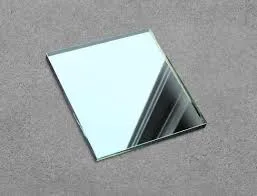

Understanding Low-E Glass The Future of Energy Efficiency in Building Design
Low-emissivity (Low-E) glass is a revolutionary product in the world of architecture and construction, primarily designed to improve energy efficiency in buildings. As energy conservation becomes increasingly vital in combating climate change and reducing utility costs, Low-E glass offers a solution that benefits both homeowners and businesses alike.
What is Low-E Glass?
Low-E glass refers to a type of commercially available glass that has been treated with a special coating to minimize the amount of ultraviolet (UV) and infrared (IR) light that can pass through the glass without compromising the amount of visible light transmitted. This coating is typically made of metal oxides and is applied to one side of the glass during manufacturing. The result is a surface that reflects heat without sacrificing natural light.
How Does Low-E Glass Work?
The basic principle behind Low-E glass is its ability to reflect thermal energy while allowing visible light to penetrate. When the sun's rays hit Low-E glass, the coating reflects a substantial portion of heat back to the outside in summer, which helps keep buildings cooler. Conversely, during winter, the same glass retains interior heat by reflecting it back indoors. This dual functionality significantly reduces the reliance on heating and cooling systems, leading to lower energy consumption.
Benefits of Low-E Glass
1. Energy Efficiency One of the primary advantages of Low-E glass is its ability to improve energy efficiency. Buildings with Low-E windows can see a significant reduction in energy bills, with estimates suggesting savings of up to 20% to 40% on heating and cooling costs.

2. Comfort Low-E glass enhances indoor comfort by maintaining a more consistent temperature within the building. By reducing drafts and hot spots near windows, occupants can enjoy a more comfortable environment year-round.
3. UV Protection The UV-blocking properties of Low-E glass help protect furnishings, flooring, and artwork from fading, extending the life of interior decor items. This is particularly valuable in spaces with abundant sunlight exposure.
4. Sustainability By lowering energy consumption, Low-E glass contributes to a reduced carbon footprint, aligning with global sustainability goals. Architects and builders are increasingly selecting Low-E glass as part of green building practices.
5. Aesthetic Variety Low-E glass is available in various styles and tints, allowing for aesthetic flexibility in design. It can be customized to match the architectural vision of a building while still providing its functional benefits.
Applications of Low-E Glass
Low-E glass is widely used in residential homes, commercial buildings, and skyscrapers. Its versatility makes it suitable for windows, facades, skylights, and glass doors. As awareness of energy efficiency grows, many countries are adopting regulations that encourage or require the use of Low-E glass in new constructions and renovations.
Conclusion
In an era where energy efficiency is critical, Low-E glass stands out as a smart solution for modern building design. Its unique properties not only enhance the comfort and aesthetics of indoor spaces but also contribute to significant energy savings and sustainability. As more builders and homeowners recognize these benefits, the adoption of Low-E glass is likely to increase, marking a positive trend in the pursuit of a greener future. The integration of Low-E glass into design will continue to evolve, reflecting the growing emphasis on energy efficiency in our built environment.